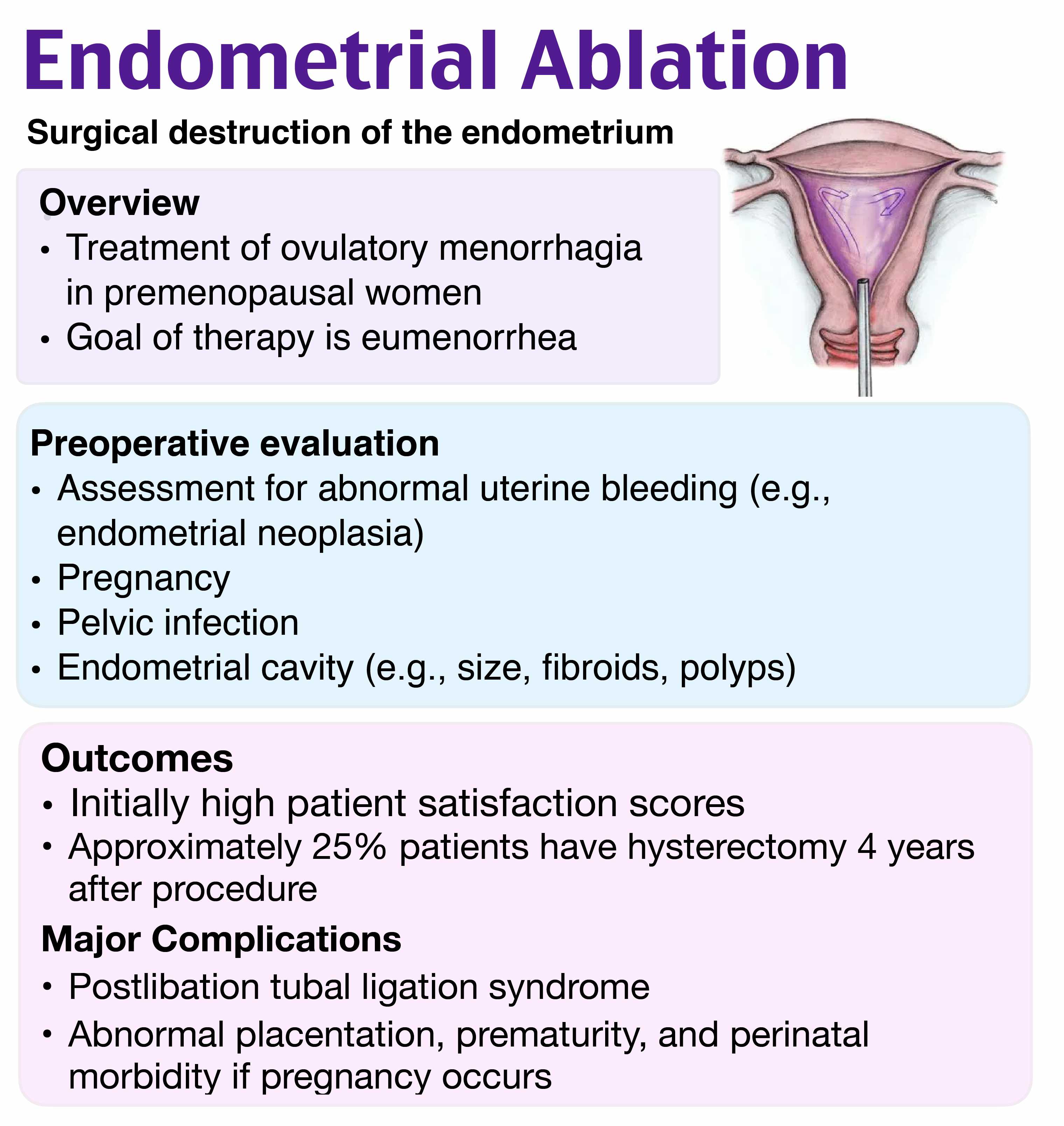A is the correct answer
Explanation:
Resectoscopic and nonresectoscopic endometrial ablation techniques can be used for the treatment of heavy menstrual bleeding. Patients are usually premenopausal, have not responded to a trial of medical management, and do not desire future fertility. More commonly, destruction of the endometrium results in a decrease in the amount of bleeding rather than in amenorrhea.
Contraindications to endometrial ablation include a desire for future fertility, endometrial hyperplasia or carcinoma, postmenopausal status, uterine malformations, and a history of prior uterine surgery that may have resulted in thinning of the myometrium. Complications and their rates vary depending on the technique employed. Of the adverse outcomes listed, abdominal pain is the most common for nonresectoscopic endometrial ablation, occurring in as high as 4% of cases.

Endometritis (B), hematometra (C) secondary to intrauterine scarring, and urinary tract injury (D) can occur after nonresectoscopic endometrial ablation procedures but do so at lower rates than abdominal pain.
P.S. Want to test your knowledge with more questions like this? Take advantage of 20% off the Rosh Review CREOG Qbank and get access to 2,000 CREOG-formatted questions with detailed explanations and images!

